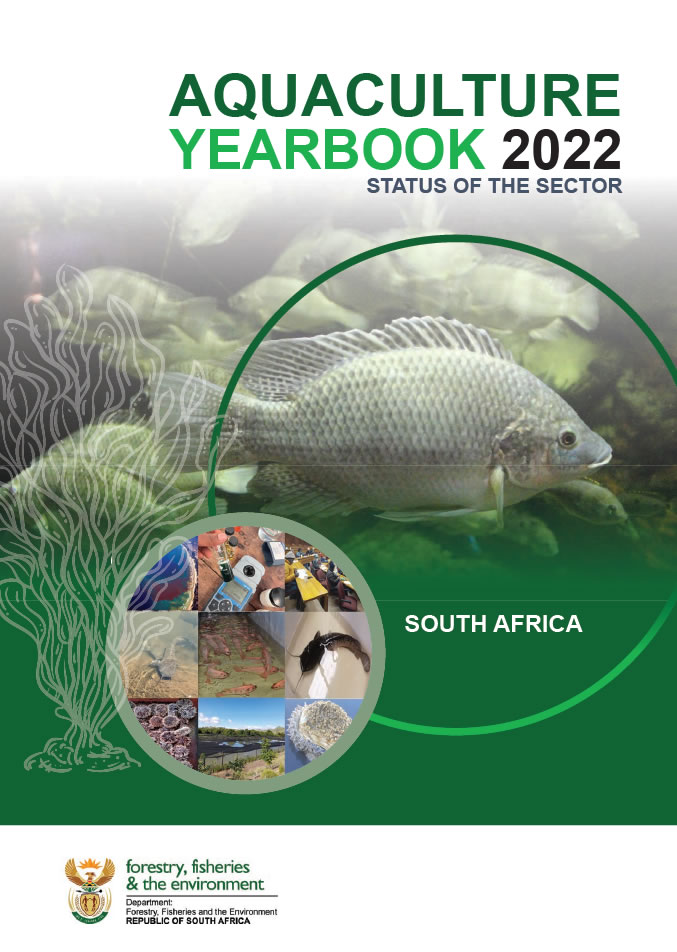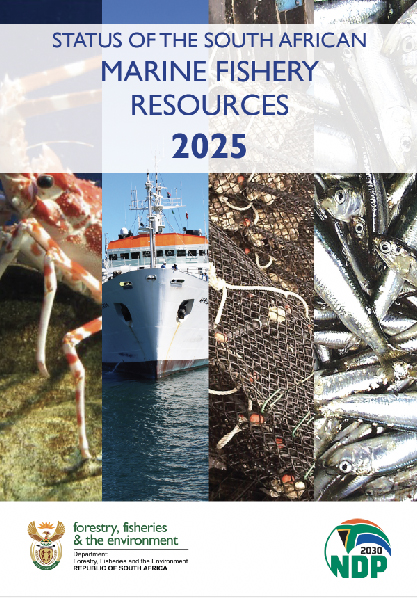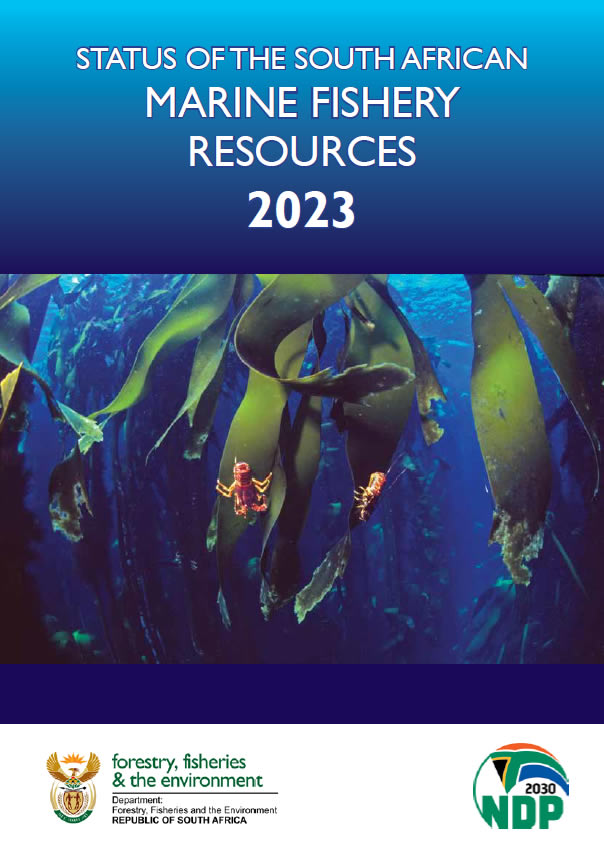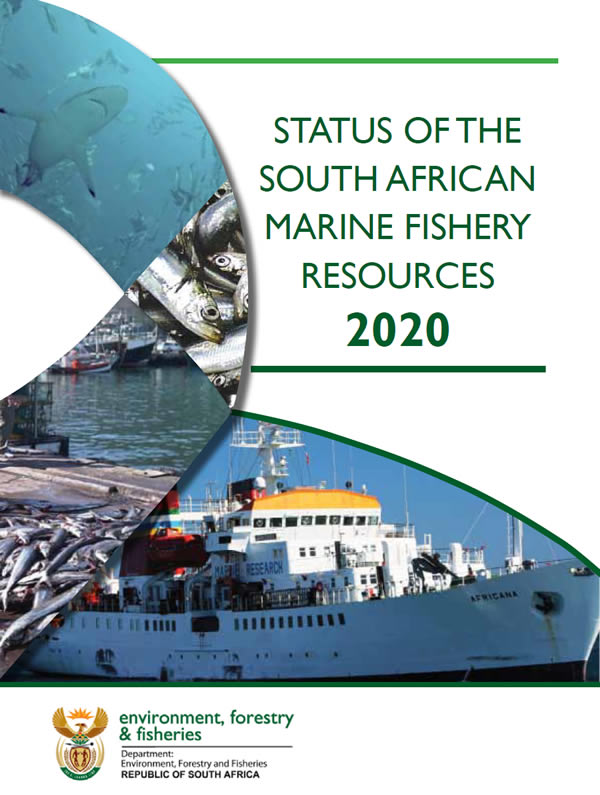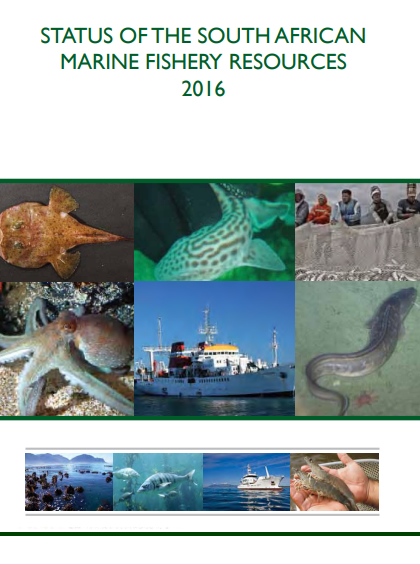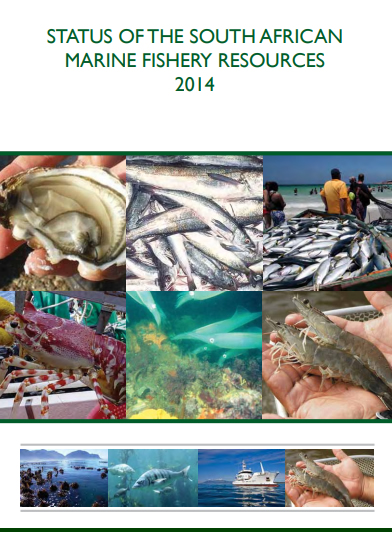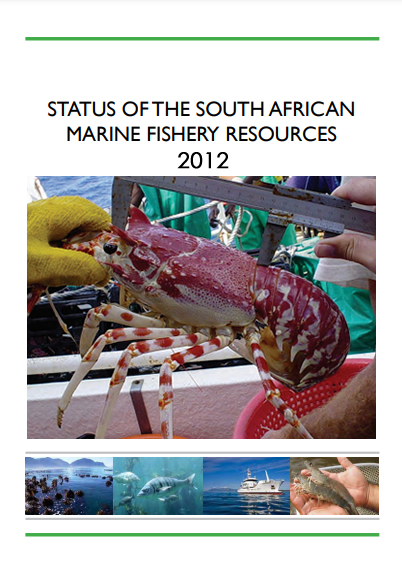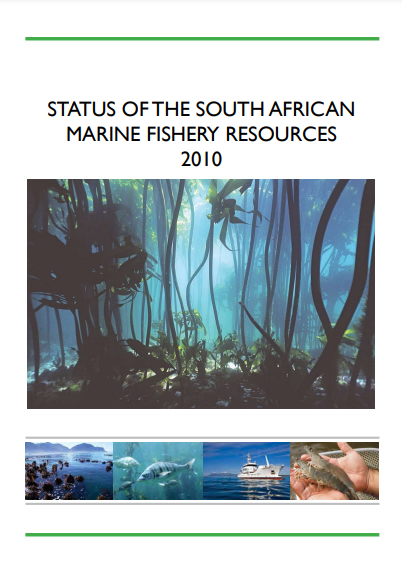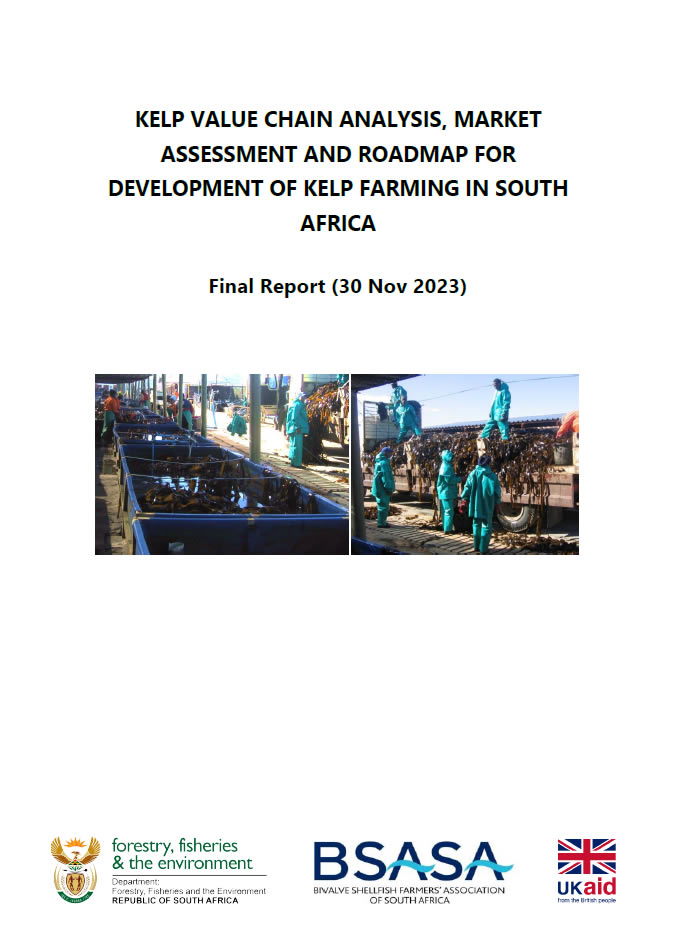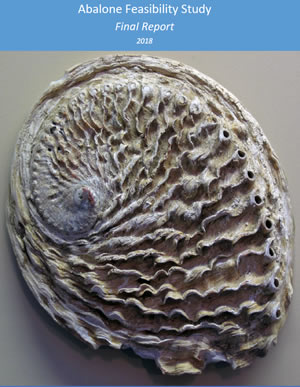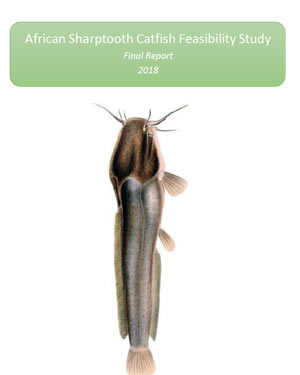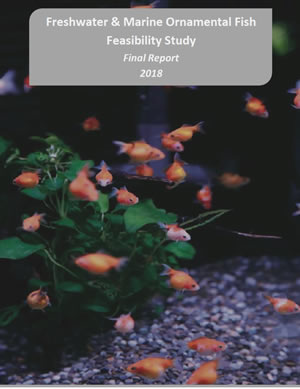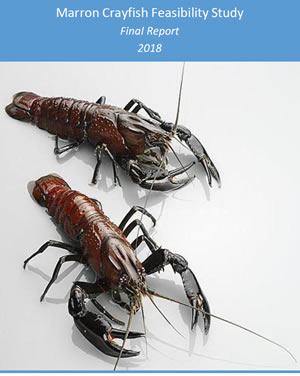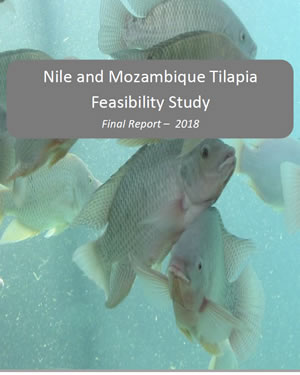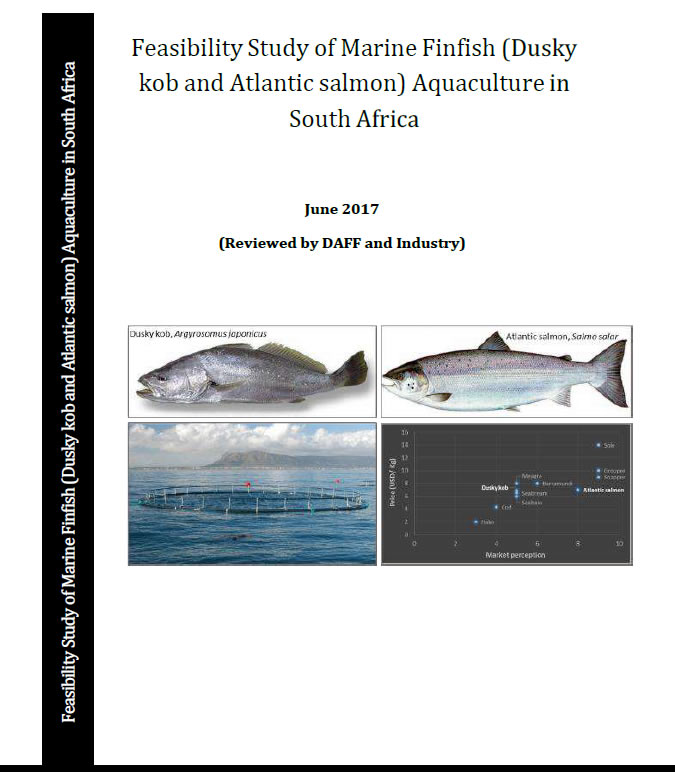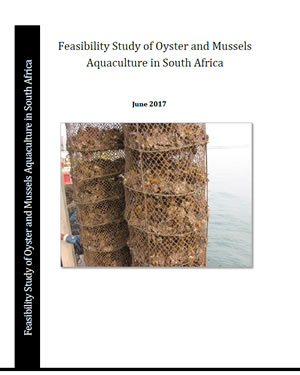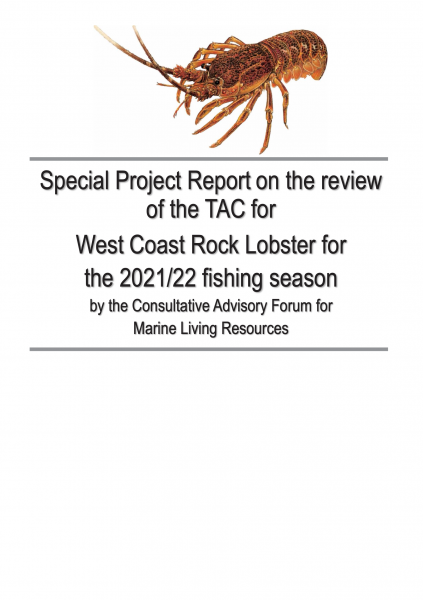Status of the aquaculture sector | Status of marine fishery resources | Feasibility studies | Publication lists | Projects
Status of the aquaculture sector | aquaculture year book
|
» download 2022 report [PDF - 8.27 mb]
|
Status of the South African marine fishery resources
The status of South African marine resources reports produced by the department are recognised as an important contribution to our understanding of South Africa’s exploited marine resources. The information is presented in a way that is of use to both scientists, fisheries managers; fishing industry stakeholders and the public. The maintenance of the high standard of research on our exploited marine resources is essential especially given the many challenges that face the sector including the imminent implementation of the Small Scale Fisheries Policy. The report presents the most up-to-date information and analysis of the status of marine fishery resources in South Africa at the time of compilation per document featured in the series.
|
» download report [PDF - 13.4 mb] |
|
|
» download report [PDF - 4.2 mb] |
|
|
» download report [PDF - 2.81 mb] |
|
|
This report presents the most up-to-date information and analyses of the status of marine fishery resources in South Africa at the time of compilation. The number of fish stocks covered in this report has increased from 43 in 2012 to 45 in 2014, and to 52 in the current report. The latest assessments indicate that a total of 52% of stocks are considered not to be of concern (blue and green categories), while 48% of stocks are of concern (orange and red categories). These figures indicate an improvement over the past six years, with 46% of stocks being considered not to be of concern in 2012 and 49% in 2014. » download report [PDF - 2.6 mb] |
|
|
|
This report presents the most up-to-date information and analyses of the status of in excess of 20 marine fishery resources in South Africa. The latest assessments indicate that a total of 48% of stocks are considered not to be of concern (blue and green categories)1 . Of these, 11% are considered abundant and lightly fished, and 37% optimal. However, 50% of stocks are considered to be of concern (orange and red categories). Of these, 22% are considered depleted or heavily fished, and 28% are considered heavily depleted. There is a small improvement since the report of two years ago (2012), when 44% of stocks were considered not to be of concern and 54% were considered to be of concern. » download report [PDF - 2.1 mb] |
|
|
|
This report presents the most up-to-date information and analyses of the status of the marine living resources in 17 fishery sectors in South Africa organised on a resource-by-resource basis. The latest assessments indicate that the general trend of deteriorating resource status with accessibility continues, with near-shore resources more accessible and likely to be over exploited than resources farther offshore. The commercial fishery for abalone was reopened in 2010 after being closed in 2008, but this resource continues to decline due to increasing levels of poaching, and remains in a depleted to heavily depleted state. » download report [PDF - 4.8 mb] |
|
|
|
The report presents the most up-to-date information and analyses of the status of the marine living resources in 17 fishery sectors in South Africa. The latest assessments indicate that there is a general trend of deteriorating status with accessibility, such that resources that are more accessible from the shore are under greater pressure and more likely to be overexploited than resources farther offshore. » download report [PDF - 1,672 kb] |
|
|
Feasibility studies
|
The study includes a comprehensive assessment and understanding of the market for kelp and a detailed value chain analysis. Drawing on the high-level recommendations and findings of the pre-feasibility study, this report establishes the market potential of kelp. A properly validated understanding of these components will dictate every aspect of value chain development, from production scale to grow-out size and quality, processing requirements, and the need for certification of production and processing facilities. The data presented in this report along with the identified value chain inefficiencies, market opportunities and roadmap establish a baseline that should be understood before embarking on or investing in kelp farming. Failing to grasp these insights puts kelp farming investors at risk of pursuing a production-driven venture instead of one driven by the market. » download report [PDF - 1,82 mb] |
|
|
|
Abalone, 2018 The South African abalone industry has experienced rapid growth and development, which is linked to continued research and development, local and international support, a well-developed local value- chain, and high demand for the South African abalone. This report focuses specifically on abalone production in South Africa, and considers the following potential production systems: (i) recirculating aquaculture systems (RAS), (ii) flow-through systems, (iii) cage culture, and (iv) ranching. In addition to the feasibility study conducted, a generic economic model was developed for abalone. The generic economic model is aimed at assisting the department, industry stakeholders, role-players and new entrants to the abalone industry to determine the financial viability of abalone projects in South Africa.
|
|
|
|
African sharptooth catfish, 2018 When considering African sharptooth catfish production in South Africa, all six (6) production system prove to be economically viable at various production scales, and when selling the fish at different farm gate prices according to the province. It is clear that African sharptooth catfish production can be profitable in all nine provinces; however, careful consideration should be given to specific conditions, as this will affect the type of system and profitability achieved. This report focuses specifically on African sharptooth catfish production in South Africa, and considers the following potential production systems: (i) recirculating aquaculture systems (RAS), (ii) pond culture, (iii) cage culture, (iv) raceways, and (v) aquaponics. In addition to the feasibility study conducted, a generic economic model was developed for the African catfish.
|
|
|
|
Freshwater and marine ornamental fish, 2018 The South African ornamental industry is still in its infant stages, with very low local production volumes. Because of the limited production, the local market is reliant on imported ornamental fish. The production of ornamental fish is challenging in South Africa specifically due to the climate extremes and low winter temperatures, as well as the need for advanced technology, infrastructure, and highly skilled and knowledgeable industry experts. Currently, there are no documented marine ornamental producers in South Africa, which indicates a gap in the market. Freshwater ornamental fish production is currently underway in South Africa; however, the supply of fish is limited and relies on local markets and retailers in Gauteng and KwaZulu-Natal.
|
|
|
|
Marron crayfish, 2018 The marron industry is an infant industry in South Africa, with only two known producers who are located in the Eastern Cape. Currently, the only production system considered suitable for marron production in both Australia and South Africa is pond culture as other production systems have not been developed and/or tested for marron. There is limited production and technical information available on marron, particularly with regards to feed habits, breeding behaviour and the potential to use alternative production systems.
|
|
|
Based on the generic economic model results for both Nile and Mozambique tilapia, it was clear that Nile tilapia is more economically viable of the two species, which can be attributed to its improved growth rate, and shorter production cycle, thus making it a more feasible species for aquaculture production in South Africa. The financial analysis indicates that all four (4) production systems (RAS, pond, cage culture and aquaponics) are feasible for tilapia production in South Africa, however, key factors such as the location of the aquaculture operation, targeted selling price and scale of production have a key influence on the feasibility and profitability of an operation.
|
|
|
|
This high-level, non-site specific, feasibility study evaluates the technical and financial feasibility of dusky kob (Argyrosomus japonicus) and Atlantic salmon (Salmo salar) aquaculture in South Africa. This study provides a background on the biology and environmental requirements of these species, different aquaculture systems used to produce them, and investigated the operational scale, timeframe, and financial requirements of a commercially viable operation. The results of the study, in terms of return on investment, cost of start-up, time to break even, will assist the government in determining the time period of leases and permits in order to support and secure investment.
|
|
|
|
This high-level, non-site specific, feasibility study evaluates the technical and financial feasibility of Mediterranean mussel (Mytilus galloprovincialis) and Pacific oyster (Crassostrea gigas) aquaculture in South Africa. This study provides a background on the biology and environmental requirements of these species, different aquaculture systems used to produce them, and investigates the operational scale, timeframe, and financial requirements of a commercially viable operation. While the focus is on an economic assessment, it was also necessary to consider social aspects including potential stakeholders and community impacts.
|
|
|
List of publications
|
The documents below list the annual scientific output of the Branch: Fisheries Management. within each document, the output is arranged by category, as follows: peer-reviewed publications; theses / dissertations / tertiary projects; book chapters, published reports and popular articles; contributions to symposia and conferences, and public presentations; contributions to workshops, short courses, and management and scientific bodies; unpublished technical reports; and unpublished working group documents. The final category, which consists of working group documents, represents the core output of the research component of the branch in terms of its line function to provide scientific advice for resource management.
|
|
|
Research projects
|
West coast rock lobster (WCRL) Jasus lalandii is South Africa’s most valuable crustacean resource. The species is slow growing and long lived and the fishery has suffered from historical overfishing, a decrease in somatic growth, environmental changes and recent recruitment that is lower than anticipated. In addition, poaching is threatening the sustainability of the resource and the people who depend on it. » download report [PDF - 891.52 kb] |
|
|
|


